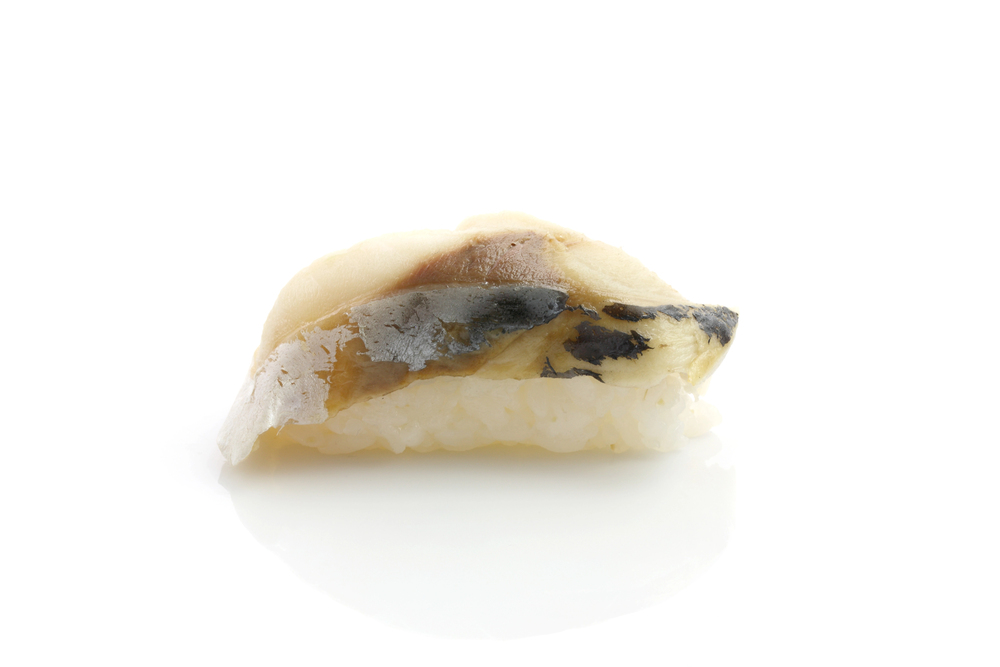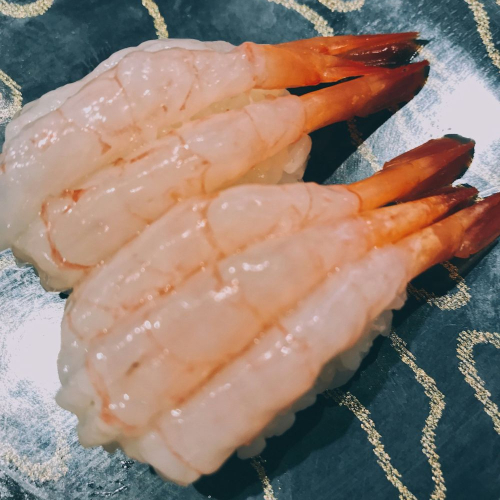When you think of the types of sushi fish…
You may think of tuna.
In this guide, you’ll learn about the 16+ coommon types of Sushi fish and get the sushi names explained.
So, let’s start with the most popular type of fish you’ll see in sushi…
1. Tuna (Maguro)

One of the most important fish used in sushi is tuna or maguro.
If you go to Japan, you’ll want to try all of the different cuts of tuna that are characterized by different flavors, textures, and levels of fat.
The three main types of tuna you’ll find are akami, chutoro, and otoro.
- Akami is the leanest type of tuna, which is firm and has a fresh taste.
- Chutoro is a medium-fatty tuna, which gives a nice balance of richness while maintaining a firm texture.
- Otoro is the fattiest part of the tuna, and it can melt in your mouth with a buttery texture.
2. Salmon (Sake / Saamon)

Another popular sushi fish is salmon as it is extremely versatile.
Just like with tuna, you’ll find variations based on the fattiness of the salmon.
A popular way to serve salmon sushi is to lightly torch the top of the sushi so that you get a nice raw but grilled flavor to the fish.
In some conveyor belt sushi restaurants in Japan, you’ll also see salmon sushi topped with Western ingredients like cheese and mayonnaise.
3. Yellow Tail (Hamachi)

Yellow tail is characterized by its fatty and mild flavor.
It’s also popularly cooked in Japanese cuisine, but as sushi, it can be a great choice for those sensitive to fishy tastes and smells.
It’s typically served simply sliced on top of rice, although you might find some variations of yellow tail inside sushi rolls.
4. Mackerel (Saba)

Mackerel is a staple on the sushi menu, and chefs typically serve it cured rather than raw.
The curing process helps with the strong fishy flavor of mackerel, as well as firm up the flesh of the fish. When curing mackerel chefs will use rice wine vinegar and salt.
If you want to try something outside of the typical tuna and salmon sushi, mackerel can be an interesting choice!
5. Freshwater Eel (Unagi)

One of the most expensive fish in Japan is freshwater eel or unagi, and it can sometimes be more expensive than tuna.
This is because the only available unagi is wild-caught and raised in captivity, and Japanese freshwater eels are considered an endangered species.
As sushi, it is served grilled with a sweet and savory sauce on top.
6. Amberjack (Kanpachi)

This is sushi that tends to be seasonal in Japan, and you won’t want to miss it if you see it on the menu.
It has a sweet and fatty flavor and it can be similar to yellow tail.
The name kanpachi comes from the way that the markings on the fish’s head form a similar kanji character for eight which is hachi in Japanese.
7. Saltwater Eel (Anago)
Anago is a saltwater eel that looks similar to unagi but has a different flavor.
Like unagi, it can be served grilled with a sauce on top, but it is much more delicate and lean compared to unagi.
Anago is also a great alternative to unagi if you’re looking for a more affordable option, as it is much more abundant and readily available.
8. Fluke (Hirame)
In Japan, you’ll also see fluke or hirame on many sushi menus.
Compared to other kinds of fish they have a more firm texture and a lighter flavor.
Because of its firmness, sushi chefs tend to cut the slices thin to make them easy to bite.
It can be a refreshing sushi to order after eating decadent fatty tuna and salmon.
9. Rockfish (Kinki)
This is a rare fish you might see served on a sushi menu, and it has an intense, sweet, and rich flavor.
The fish itself is characterized by its beautiful red color, and it is typically caught in the northern part of Japan, in Hokkaido.
It is one of the more expensive fish that is served as sushi.
10. Shrimp (Ebi)

There are various kinds of shrimp that you’ll find on the sushi menu such as ama ebi (pictured above) , botan ebi, sakura ebi, akaebi, and more!
They are either served boiled and split open on top of sushi rice or served raw depending on the season.

11. Octopus (Tako)
Octopus is a common sushi you’ll find in Japan, and it is typically boiled and sliced to bring out the flavors.
It has a mild and sweet flavor and is sliced thin so that it is chewy but easy to eat.
The one on the left is the normal type of “ebi sushi” and the one on the right is “akaebi” and is much plumper and juicier.
12. Squid (Ika)
You’ll want to try squid sushi if you have never tried it before! It is delicate, sweet, and tender when served as sushi.
Typically, the squid is sliced and served raw.
If the squid is freshly caught, the color is almost transparent. As time passes, the color tends to become closer to white.
13. Sea Urchin (Uni)

Sea urchin is an expensive delicacy that is served on top of rice and typically wrapped with nori seaweed to hold it in place.
The flavor of sea urchin is creamy, delicate, and rich and pairs well with the vinegared sushi rice. It’s also a taste — salty and sea-like — that some really like and others not so much — so keep that in mind.
Uni is so delicate that it has to be iced immediately so that the flavors stay intact before serving.
15. Salmon Roe / Eggs (Ikura)

Like sea urchin sushi, salmon roe sushi is often served wrapped in nori seaweed to hold the roe in place.
Salmon roe can have a briny sweet flavor that bursts in your mouth as you bite it.
It is one of the most unique textures available on a sushi menu, if you want to explore different textures and flavors!
16. Sea Bream (Tai)
Sea bream sushi or tai is a fish that you might see more commonly on sushi menus from winter to spring season.
It has a refreshing yet fatty flavor that tastes delicious with sushi rice.
Because of its clean flavor, this could be a great fish for those who don’t like strong fishy flavors.
Conclusion
Now you know about the types of sushi fish…
Which are your favorite?
Are there any missing from this list?
Leave a comment!





